Matheson is trying to buy an electric vehicle (EV),specifically,a Hyundai Ioniq 5. Before the pandemic,many EVs were being quietly discounted due to lack of interest;now they’re the hottest ticket in town. “They sent me all these emails … saying a new batch is going on sale,” she tells me. But Matheson realises she is not live (“I must have started a fraction too early”),and has to start again.
As Matheson taps away,Andrew Stamatakis,head of Hyundai Motor Company Australia’s Direct to Consumer division,watches wide-eyed from head office in Macquarie Park,in north-western Sydney. The retail and e- commerce veteran can’t see names or locations on his screen,but can see that there are 4500 people frantically competing for just 68 cars. Every time he hits refresh,another seven or eight have been sold.
“The only thing that would come close,” he says afterwards,“is when I was working at Dick Smith when PlayStation 4 came out[in late 2013]. That
volume was incredible. But this is different,we’re talking about an $80,000 car – not a $500 console.”
Matheson is keen to do the right thing – she also volunteers for green causes – but wants an EV that is desirable in its own right,a sporty car with style. So she races through the configurator again. Each time she adds an option,it calculates the cost,and takes what seems like a very long time. When she gets to the point of confirming the purchase,it tells her nothing is available. Only a couple of minutes has elapsed.
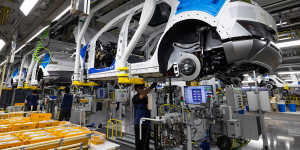
The Hyundai Ioniq 5 production line in South Korea. In May,4500 Australians competed to buy 68 of the $80,000 cars. They sold out in minutes.Getty Images
Australia is seeing a dramatic upswing in interest in electric cars,influenced by state subsidies,improving technology,new models,rising fuel prices and a federal government finally prepared to give a helping hand (albeit a modest one;it has introduced legislation to abolish the 5 per cent import duty on some EVs,to lift the fringe benefits tax,and to spend $500 million on expanding the charging network. Last week it outlined a plan to work with the states to harmonise EV incentives and policies). But this is happening when EV supply is tighter than ever.
It’s not only Australia that has gone mad for electric vehicles. Every EV maker is struggling to meet global demand,a situation further complicated by a shortage of semiconductors – of which EVs use plenty.
Australians were quick to put solar panels on their roofs,and in the May general election voted for climate action. Yet until the pandemic,we showed little interest in electric motoring. In 2019,there were fewer than 10,000 EVs in a new-car market of 1.062 million. Now the waiting list is likely to measure months.
“We have tens of thousands of people on our expression of interest list. The Australian market is starved for EVs.”
While sales of EVs,they still accounted for just 2 per cent of new-car purchases. Other countries eclipse these figures. In the UK,about one in eight new cars last year were pure EVs,in the Netherlands close to one in five. Norway is the runaway leader for adoption,with almost two out of every three.
“We have tens of thousands of people on our expression of interest list,” says Hyundai’s Stamatakis,“but no matter which way you carve up numbers like 68,we’re always going to be left with people who are,unfortunately,disappointed. This is what I’m funnelling back to the factory … the Australian market is starved for EVs.”
Backing up his argument,a new Ioniq 5s,priced at $76,000 plus on-road costs,was recently offered online for $110,000.
I drove my first electric car in 2010,a slow,glitchy and decidedly ugly Mitsubishi i-MiEV. It was tiny,frail,ran for just 115 kilometres between charges,and cost $65,000. The second was a Tesla Roadster in 2011,which had a better range (closer to 300 kilometres in real-world conditions) and Ferrari-like acceleration,but was nearly $300,000 and rattled like a kit car.
Now I’m in Canberra,it’s a crisp three degrees,and I’m standing next to the Mercedes-AMG EQS53,known as the EQS. This luxury limousine,costing $328,000 plus on-road costs,has a low-dropping nose and hooped silhouette,and is the most sci-fi EV on sale here yet. The silver handle on the driver’s door moves out to meet me. Once inside,a vast,sculptured OLED touchscreen stretches from the instrument panel to the passenger side. Even the leather seat facings have built-in lighting.
The car takes off with a silent surge and the EQS soon reveals its engineering brilliance. This model is good for 565 kilometres between charges and has the quietest cabin of any vehicle on the road. It can also,thanks to four-wheel steering and brilliant electronics,change direction with more agility than seems plausible for a limousine.
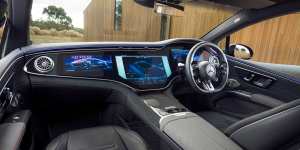
The Mercedes-AMG EQS53,known as the EQS,is good for 565 kilometres between charges.Supplied
This is a “halo” flagship,designed to showcase the tech we’ll see in less exorbitantly priced Benzes soon. Yet for all its dazzle,the EQS is also an admission of defeat. Until now,Mercedes-Benz has been asking not how to make the best EV,but how to make the best EV using partsalready available.
Its electric cars have been compromised adaptations of petrol models. This new effort,a bespoke EV built from the ground up,acknowledges that the Tesla approach produces a superior result. Yet it was never a fair competition. Tesla achieved its industry-leading position while losing billions of dollars year after year,something a conservative public company such as Mercedes could not do.
Tesla has been described as a personality cult and worse. Elon Musk is now the sole spokesperson,for example,having closed the PR department. Yet despite Musk’s numerous crimes against humility,most cars produced by Tesla have been highly acclaimed and,collectively,they’ve spurred today’s EV revolution. They account for.
Mark Tipping,a former domestic motorcycle racer and high-performance-engine builder,is perhaps an unlikely convert to the EV cause. Yet he’s driven 430,000 kilometres in Teslas since purchasing a Model S P85D sedan in 2014. He later added a longer-range P100D to his garage. “I bought my first Tesla because it was the best car I could buy,” he says. “I’d never driven a car like one before … and I wanted it,I wanted it as a performance car. I was a car nut,not a greenie.”
Tipping is president of the Tesla Owners Club of Australia – which claims 2000 members – and is perhaps,now,a greenie. When we speak,it’s via a bad mobile phone connection as he crosses from outback Queensland into the Northern Territory. He’s on a 6000-kilometre EV road trip,part of a new career bringing energy security to remote areas,particularly Indigenous communities,mainly by linking solar with back-up batteries. And he claims that,with all his driving,he’s at least $50,000 better off than he would be if he’d owned petrol cars.
There’s no mystery to an EV. A Tesla,or an EQS,works much like a conventional car. It combines a power unit (in this case an electric motor) and fuel (electricity stored in the battery). The EV motor is light – as little as 60 kilograms – while the tank is heavy. A typical petrol tank may add 40 to 50 kilograms when full,with a range of 400 to 500 kilometres. A battery giving that sort of range can weigh half a tonne,doesn’t get lighter as it’s depleted and can’t be “filled” in a few minutes at any one of the thousands of service stations around the country. (The fastest big batteries can charge from 10 to 80 per cent capacity in 22 to 30 minutes.)

Mark Tipping,president of the Tesla Owners Club of Australia,says that when he bought his first Tesla,“I was a car nut,not a greenie.”Jesse Marlow
On the other hand,says Professor Bruce Mountain,director at the Victoria Energy Policy Centre,“from the environmental perspective,EVs convert far more of their source energy into movement. So typically,a car’s engine will lose three-quarters of its energy in heat and noise. An EV will only lose about 10 per cent,in heat mainly. So,you can apply far more climate-friendly fuels – wind and sun and so forth – and far more of it is used. So EVs are a critical element of our decarbonisation.”
Mountain,a 53-year-old economist,engineer and accountant,had an epiphany 15 years ago while working at a coal-powered energy provider. He began studying the effects of global warming and came to believe it was a major threat to the future of his two young children. He changed direction,completed a PhD on market failures in energy policy,and is now heading a centre attached to Victoria University that’s part-research institute,part-think tank. “The broader public interest lies in turning our vehicle stock into battery-powered vehicles,” he says.
Mountain believes this can be done with few downsides for customers. “EVs are dear to buy,but cheap to run … they are nice to drive,they have all of their torque at zero revs,and so they are tractable and quiet and flexible. I just know how much more enjoyable and stress-free they are.”
Mountain drives a Mitsubishi plug-in hybrid,using electricity in the city and the petrol engine for longer journeys (he’ll go fully electric with his next vehicle). He stresses that the automotive gasoline engine has had more than 130 years of intense development;the lithium-ion EV has matched it in many areas,and exceeded it in others,in a comparatively short time. And it will continue to improve,while the cost of renewable energy will keep falling.
There were EVs in the earliest days of motoring. In 1899,one known as La Jamais Contente (“Never Satisfied”) was the first vehicle to exceed 100 kilometres per hour,touching 105.88 in the hands of Belgian race driver Camille Jenatzy. But in the early 20th century,cheaper,lighter petrol cars such as the Model T Ford dominated,then all but eliminated,the EV.

An early version of an EV from 1899 – the La Jamais Contente.Getty Images
In 1996,to the surprise of many,General Motors revived the idea,building about 1100 examples of its EV1 coupe. Then the company mysteriously changed its mind,recalled nearly all the models and crushed them. This led to conspiracy theories and,eventually,the hit 2006 film,Who Killed the Electric Car?. It also inspired engineers Martin Eberhard and Marc Tarpenning to form Tesla in California in 2003. Elon Musk,cashed-up when PayPal was sold,invested in 2004 and led the program to develop Tesla’s first
production car,the two-seat,open-top Roadster.
The Roadster went on sale in 2008 with lithium-ion batteries,as found in laptops,strung together in great quantities – and at vast cost,with the initial models here just under $250,000,plus on-road costs. This was the technical leap that paved the way for today’s EVs. The other dramatic difference was that its advertising was based more on performance than any green credentials.
Suddenly,the EV was sexy,though that didn’t help Tesla,which was losing tens of thousands of dollars on each sale. Yet Tesla persevered,surviving a string of near-death experiences,nearly going under. It’s now the fifth most valuable company on earth,worth $1.32 trillion in mid-August,more than quadruple that of nearest automotive rival Toyota.
Matt Windle joined Tesla as an engineer in 2005,when it was so small that Elon Musk – by then the chairman – made a point of talking to every new employee in person. Did Windle think they were going to change the automotive world? The stocky,quietly spoken Englishman shrugs his shoulders. “I believed in Elon. He was a real visionary and very,very committed … he was telling me,‘I want to change space travel,I want to change automotive,and I want to get humans onto Mars.’ He was saying that in 2005,and he’s still on that mission now.”
Our conversation has the background sound of high-revving petrol engines. Windle became managing director of Lotus in January 2021 and is visiting Australia to attend an owners’ day at Mt Panorama,Bathurst. We sit above the pits,while dozens of the small British sports cars circulate at very high speed.
Windle now has his own mission:to turn the iconic,though perennially troubled,Lotus into an all-electric brand. Yet several of the people making an unholy racket outside had already told him they couldn’t think of anything worse than an electric Lotus. “I understand the concerns,” says Windle. “I was talking to one … and I think we’re going to set up some sort of counselling scheme over here,because he was literally just saying,‘No! No!No!’ ”
Still,Windle believes even the most fervent petrolhead will see the light when they experience EV performance (a limited-edition Lotus Evija coupe already produces 1470 kilowatts,five times the power of the most powerful non-EV Lotus). He says owners of silent electric Lotuses will be “overtaking the noisy ones,without a doubt”.
That Lotus – and Maserati,Ferrari,Rolls-Royce and others – are making the move to electricity shows the scale of the transformation. In the meantime,there are halfway steps such as petrol-electric hybrids,and alternatives such as hydrogen. Alan Finkel,Australia’s chief scientist from 2016 to 2020,is the only person in Australia to own a hydrogen fuel cell EV. It’s a Toyota Mirai sedan,one of 20 brought into the country for evaluation purposes (the remainder are leased).
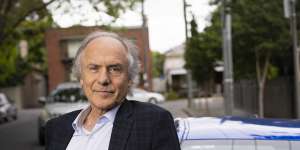
Former chief scientist Alan Finkel calls the low cost of servicing electric vehicles “embarrassing”.Eamon Gallagher
There are no short answers from Finkel,a neuro-scientist,inventor and much more,now in his late 60s. His answers charge at breakneck speed through facts,figures,chemical compounds and,although nominally about EVs,also take in the sea,the sky and outer space.
Finkel believes that battery electric will be the way forward for most passenger car applications,with hydrogen having more potential for trains,trucks and buses. He’s owned three different battery EVs and his back-of-the-envelope calculations before the recent increase in power prices suggest the average electric car typically costs $50 to run 1000 kilometres when charged at home,less if you have solar. “If you drive 12,000 kilometres a year,which I think is close to the Australian average,it’s $600 a year. Beat that with petrol!”
And,Finkel points out,EVs have far fewer moving parts and are more durable. “Servicing is embarrassing. When you get the bill you say,‘Can’t I pay you more?’ ”
Finkel concedes that the energy used to manufacture an EV is greater,and that if you plug your car into a power-point you’re possibly using brown coal from the Latrobe Valley. But people who use that as an excuse to condemn EVs,he reckons,are “looking in the rear-view mirror”.
Car factories are reducing carbon emissions during the manufacturing process,he says,and even a grid-powered electric car is cleaner than a petrol equivalent. He believes that equation will become increasingly more favourable as the proportion of renewables in our energy grid increases.
What about criticism of how,which accounts for two-thirds of global supply? “There’s slave labour and child labour[there],and that’s a terrible thing. But you can also say such things about sneakers. That’s a problem that has to be addressed. It’s not an intrinsic problem of electric vehicles. Ethics is a problem for all goods and services that we get from around the world.”
The most frequent comment in any EV discussion is range anxiety:the worry that you aren’t going to make it to your next recharging spot. Research shows about 90 per cent of EV owners charge at home,plugging into a power-point overnight a couple of times a week. But that requires off-street parking,and isn’t much help for long trips. Manufacturers report that many potential buyers are demanding a range of 500 or even 600 kilometres before they’ll make the switch.
That sounds excessive when ABS figures report Australians drive little more than 30 kilometres each day on average,but anyone who’s taken a long trip
in an EV knows how much hassle it can be. Yes,there’s a growing network of chargers,run by sources including Tesla,roadside assistance organisations and local councils,but it’s still woefully insufficient and haphazardly distributed.
Recently,I stood under an awning at a charging station in a wet and windy Goulburn,waiting for the Audi EV I was testing to put on enough juice to get me to Canberra. Sam Wilson,an Atlassian software technician dressed in his orange SES uniform,stood shivering beside me. He was “very lucky” to secure a Hyundai Ioniq 5 earlier this year,had driven 10,000 kilometres in five months,and loved the technology. “It’s just a normal car,” he said,“a very competent car. It’s a shame,we’ve solved almost all the problems with EVs and now no one can get one.”
Wilson,who normally charges at home,said a fast public charger in high summer takes 20 minutes. Not that day. He was in a queue for one of the two fast chargers,with a near-flat battery and needing to get the 200 kilometres back to Sydney. The other owners were generally delighted with their cars but bemoaning the wait,and that the cold weather was slowing the charging down. My Audi,on a slower charger,needed 100 minutes to reach 100 per cent. I didn’t have that long,nor the time to queue for a faster charger,so had to head off with 150 kilometres of range – a buffer of just 50 kilometres.
It was nerve-wracking – if I’d run out,I’d have been sitting in a 2.5-tonne brick – but I made it to my Canberra meeting. Then I had to find another charger,which turned out to be a lot harder than it should’ve been. I sat in the car and worked while it slowly powered the car up.
Norway has achieved its with a large carrot for EVs and an even bigger stick for petrol cars. But those who rail against EV subsidies – from late-nightSky News commentators to the noisiest guy in the pub – may be overlooking the money directed by governments towards Big Oil,and the geopolitical wrangling and bloodletting that keeps the thick black liquid flowing. that global fossil fuel subsidies were $US5.9 trillion in 2020,or about 6.8 per cent of GDP,and are expected to rise to 7.4 per cent of GDP in 2025.
Australia’s tax structure favours large and inefficient motor vehicles. The Victorian Energy Police Centre’s Bruce Mountain points to the foregone Fringe Benefits Tax (FBT) revenue,for example,on our:dual cab utes. These big,thirsty machines are officially commercial vehicles,and usually FBT-exempt,even though many are used solely for transport and recreation. “Ute demand in Australia is the highest per capita in the world that I know of,” says Mountain.
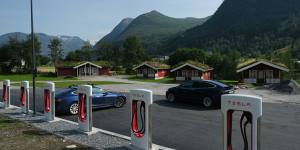
Norway has various incentives in place for electric vehicle owners.Getty Images
Then there are Australia’s automotive emissions standards,which are voluntary – in other words,almost meaningless. It’s a farce,says Mountain,and it encourages car companies – he cites VW as an example – to send their older,dirtier engines to Australia. “Customers are not seeing the societal cost of the choices they make … and the public good would be much better served by subsidising EVs and low-fuel-use vehicles,and taxing high-use petrol vehicles.” He says Australia is one of the few Western countries not to do so.
EV zealots can be capable of overlooking any flaw. A US survey byConsumer Reports last year showed that Tesla had the highest owner satisfaction among any brand,EV or petrol,but was at the bottom of the reliability ratings. And as any reader of social media or the comments sections on motoring sites will know,there are those who see the EV revolution as a plot to take away their V8s or turbo fours and substitute them with “whitegoods on wheels”. Some don’t believe in climate science,or argue that anything Australia does has very little impact globally,so why should we?
“You can’t appreciate it by reading about it,or being a passenger. You have to drive it and feel the responsiveness as the sole of your foot touches the accelerator.”
A compelling argument for the likes of those Lotus owners baulking at the idea of a battery sports car is that they’re already very good,and fast improving. No one who’s driven Porsche’s Taycan is likely to complain about its performance or handling – so much so that it outsells the company’s other sports sedan,the petrol-powered Panamera,by 10 to one in Australia.
More affordable (though still expensive) EVs such as the Tesla Model Y and Kia EV6 are a delight to drive. And price parity is coming. Behyad Jafari,CEO of Australia’s Electric Vehicle Council,believes it could be reached at the bottom of the market in as little as four years,though cars will become more expensive overall. “In all likelihood today’s entry-level petrol/diesel car won’t exist next decade. We are seeing the sub-$20,000 cars disappearing now,with the expectation that the minimum will keep rising.”
Alan Finkel says climate change is not the only factor that led to the development of electric cars. “Most people,if not all people I know,who currently own electric cars would never go back to an internal combustion engine. You can’t appreciate it by reading about it,or being a passenger. You have to drive it and feel the responsiveness as the sole of your foot touches the accelerator.” Finkel,too,is sure that revheads will eventually be won over.
That said, there are plenty of legitimate criticisms of green motoring. A battery pack can cost the company building the car $20,000,and retail for far more by the time it reaches the showroom floor. So the people competing for Ioniq 5s or ordering new Teslas can only “do the right thing” – or be seen to “do the right thing” – because they’re well-off. And we’ll need to get rid of hundreds of millions of these battery packs in time – there are more than 1.4 billion cars on earth. Fortunately,recyclability is improving and many car batteries can enjoy a second life,adapted as domestic storage.
EVs are heavy,which makes them more dangerous in a crash. In the US,instead of ditching their enormous pick-up trucks for more responsible vehicles,many companies are producing battery-powered pick-ups that are even porkier.
GM’s new Hummer EV weighs 4.1 tonnes,430 kilograms more than its classic model,yet will accelerate to 100 kilometres an hour in three seconds. Such a vehicle could do massive damage in an accident. Then there’s fire. The chemicals in lithium-ion battery burn extremely hot and are notoriously difficult to extinguish,though EV fires are not as common as the naysayers will have you believe (the chance of fire in a petrol-powered machine is much higher).
And there’s greenwashing. Tesla’s stated mission is to accelerate the world’s transition to sustainable energy,but it isn’t always very green. The company was fined US$1 million last year for 33 breaches of air quality regulations at its manufacturing plant in Freemont,California. Chinese car maker Geely – which owns Volvo (and its all-electric spin-off,Polestar) – has shifted its petrol engine production into a separate company called Aurobay. Cynics see this as a ploy to artificially eliminate Volvo’s official corporate emissions.
Furthermore,ABS figures suggest that. This might be because they are absolved of the guilt factor and often the cost,too (several new EVs include free charging for the first few years). This could be bad news for traffic congestion.
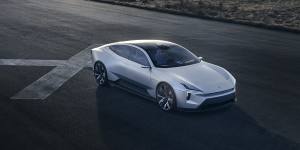
More than $60 million is to be used to promote electric vehicles in Western Australia.Supplied
Samantha Johnson,the managing director of Polestar Australia,won’t comment beyond her brand,which she says fastidiously audits its supply chain and publishes an annual life cycle assessment report,which compares its flagship EV Polestar 2 with an equivalent internal-combustion-engine vehicle. Taking manufacturing and 200,000 kilometres of driving into account,the Polestar 2 produces 46 tonnes of carbon dioxide from the current global energy mix,compared with 58 for a comparable petrol car. In regions primarily using renewables,the Polestar 2 figure falls to 26 tonnes.
“We’re not perfect and neither is any other brand,” says Johnson. “But we know where we are now and every single car we bring out from here will be more sustainable,with the moonshot goal of 2030,when we will produce a net-zero emission vehicle[through] the whole life cycle.” Johnson noticed a dramatic “shift in mindset” about EVs in Australia between the 2019 and 2022 federal elections. “Prior,people were on the fence. ‘Is climate change really an issue? Is it something we really need to do something about?’ ”
The super-fit 40-something sailboarder,kite sailor and runner used to work for Harley-Davidson,makers of loud and smoky motorcycles. Johnson “atoned” by getting a job with Volvo – on its own path to an electric transformation – and then Polestar.
“Prior,people were on the fence. ‘Is climate change really an issue? Is it something we really need to do something about?’ ”
Australia’s choice of new EVs is small and most of what we have is made in China,now responsible for nearly half of global EV production. That includes all current Teslas,Polestars,electric Volvos and MGs,and BMW’s iX3. The quality coming out of China is good (Chinese-built Teslas demonstrate better fit and finish than US ones) and we are likely to soon see Chinese brands such as Ora and Nio joining new arrival BYD.
EVs are also changing the way cars are sold. They tend to attract a more digital-savvy customer and most makers are opting for the direct-to-consumer model so successfully exploited by Tesla. Johnson says this is good news for women,who – in 2022 – are still asked by some sales consultants when their husband will be coming in to make the final decision. “It’s really patronising.”
The cost of EVs should drop as improved economies of scale and price competition among brands kick in. And with every major carmaker throwing billions at the issue,there’s the chance a step change will make range anxiety and slow charging a thing of the past. The most likely is a move to more energy-dense,solid-state batteries. These should reduce the weight of an EV which,in a virtuous circle,will improve the range.
And what about our 20 million petrol cars? Finkel says we should let them run their usual 10 or 12 years. “Just make sure all the replacements are electric.” After driving about 70 new cars of all types in the past year for my job,my next one certainly will be.
To read more from Good Weekendmagazine,visit our page at, and.
